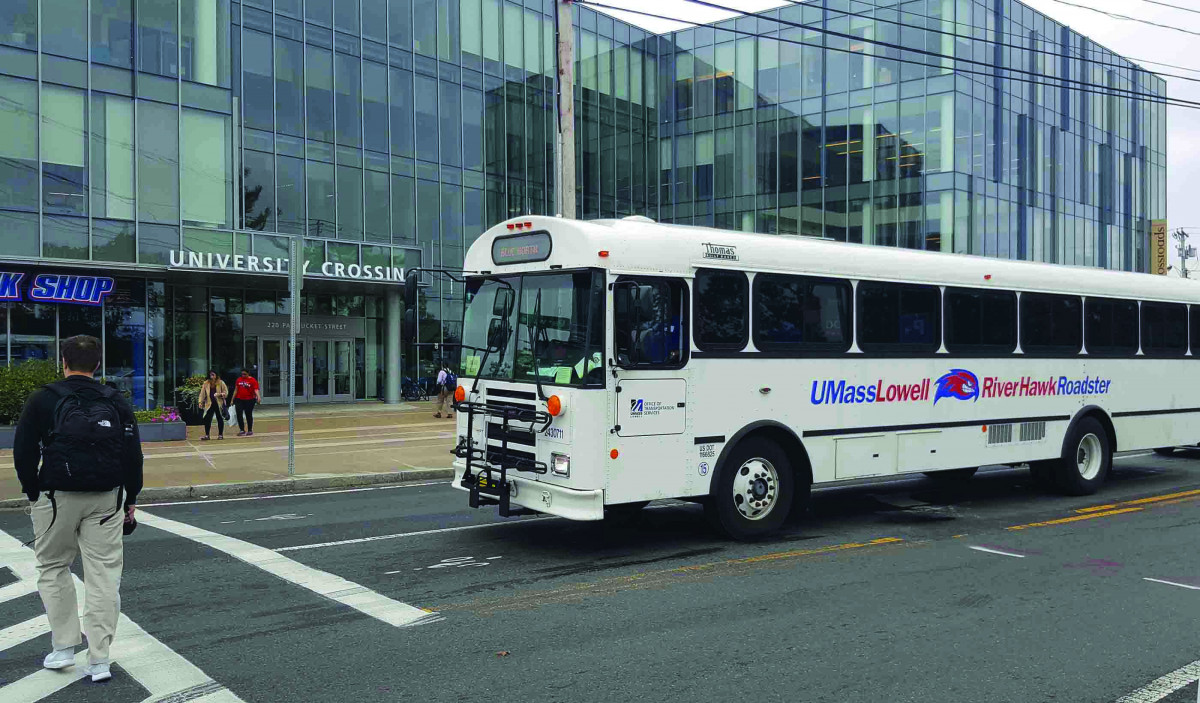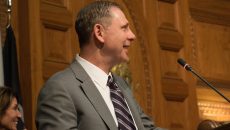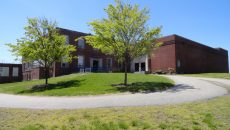(Photo courtesy of Stantec) “UMass Lowell bus system fails to transport student between campus’ in a timely manner.”
Troy Lafond
Connector Staff
With UMass Lowell being fragmented between three subsections of campus, a strong transportation system is needed to connect its students. The residential East Campus and the STEM and business class-focused North Campus are close enough in proximity for able-bodied students to be able to walk most days, but the liberal arts major-focused South Campus is often too long of a walk for anyone. However, inefficient bus routines and a lack of running shuttles at any given time often inhibit the ability of students to get between the campuses in a reasonable amount of time.
As a student who currently resides on East Campus while being a South Campus major for the advantages of living in a gorgeous River Hawk Village townhouse, I must rely on the bus system to get from my townhouse to my classes. The walk, especially in the heat of the past week, is too long for me while being weighed down by textbooks. Getting to and from classes this semester is an endeavor that takes up to an hour each way.
The morning runs a bit more efficiently as of now. I can usually get from bus stop to bus stop in about 20-30 minutes, which, while occasionally annoying, is plannable. However, getting back to East Campus is much more challenging, and has taken upwards of an hour in the past week. In the afternoon, buses already must deal with traffic, but they also run wildly inefficient patterns. Upon getting to the bus stop to head back, it has been extraordinarily common to open the Roadster Route app and see two buses in the same location on East Campus, one over at the bus barn and one at a random spot not moving.
I do not blame the Office of Transportation Services for the inefficiency of these routes. Transportation Services had their budget cut by the school this year, forcing them to cut back on their service availability. The Orange Line from East to North Campus almost had to be removed entirely during weekdays, before getting restored after the Inn and Conference Center (ICC) lines were cut instead due to it being used to house migrants.
However, these two ICC lines were cut entirely, and the only change to the rest of the services were granted to the Orange Line for weekday service, which has been running two buses at a time (at least, that show on the Roadster app). The Red and Blue Lines still run three to four buses as they have in the past. This means that either each ICC line was originally only to run one bus at a time, which would have been a disaster for any student who would have lived there, or there are now at least two buses out of commission. If the former is the case, then the transportation budget for this year is even more dire than it seems. If the latter is the case, then why can these not be implemented to improve efficiency on the Red and Blue Lines?
Lastly, while this has been an ongoing issue, the lack of student awareness on when buses will be detoured to the bus barn for a driver switch needs to be resolved. These unannounced detours make students late to commitments without being given the opportunity to decide to walk, Uber or find another way across campus. While removing these detours is not an option as drivers need to be allowed to take breaks and end their shifts, students should be aware of when each bus will be making this detour so they can plan their day around it. A lack of communication on the bus drivers’ part should not be forcing students to be 20 minutes late to class.
The decision to cut down instead of investing further in getting students around campus is a frustrating one, seeing how busy student life can be on campus. We as a campus community rely on an effective shuttle system to link the disconnected campus together and get to classes, clubs, meetings, jobs and other commitments on time. If we need to pay increasingly more money each year, it should only be reasonable for us to see all the services we are offered over the years improve, rather than decline. This is especially true for services that are necessary to our lives.




